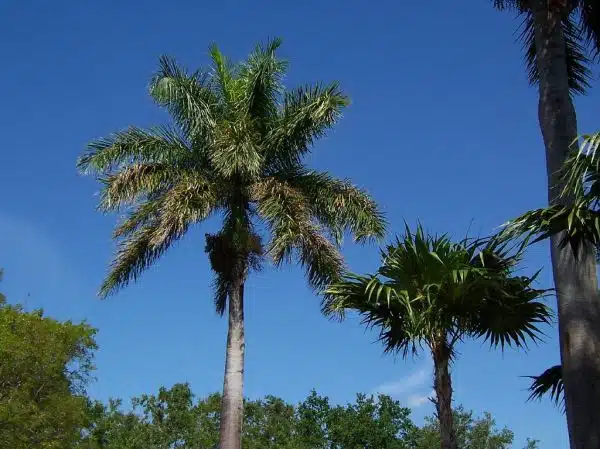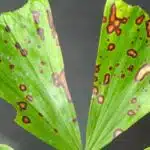As certified arborists, we understand the importance of maintaining healthy trees and plants in our ecosystem. One tree that requires regular maintenance is the palm tree. Palm trees are not only aesthetically pleasing, but they also provide shade and habitat for various animals. However, improper pruning techniques or neglecting to prune at all can harm the health of the tree and pose a safety hazard to those around it.
In this article, we will discuss how to properly trim a palm tree and when not to prune. We will cover topics such as identifying when a palm tree needs trimming, choosing the right tools for the job, and understanding which parts of the tree should be pruned. Our goal is to empower homeowners, landscapers, and other professionals with the knowledge they need to care for their palm trees efficiently while preserving their natural beauty and benefits.
Understanding The Importance Of Proper Palm Tree Maintenance
As a certified tree care specialist, I cannot stress enough the importance of proper maintenance for palm trees. These majestic trees not only add aesthetic value to your property but also provide numerous benefits such as air purification and shade. However, without proper care, they can become a hazard to people and property.
One crucial aspect of palm tree maintenance is fertilization. Palm trees require specific nutrients that are often not present in the soil they are planted in. Therefore, it is essential to choose the right fertilizer and apply it at the appropriate time to ensure optimal growth and health. Failure to do so could result in stunted growth, yellowing fronds, or even death of the tree.
Another critical factor to consider when maintaining palm trees is choosing the appropriate species for your location. Not all palm tree species thrive in all environments; some require specific conditions such as soil type, moisture levels, and sunlight exposure. Choosing the wrong species could result in poor growth or even death of the tree. Thus, it is vital to consult with a professional before planting a new palm tree on your property or replacing an existing one.
To maintain healthy palm trees, one must be proactive in identifying potential issues and addressing them promptly. In the next section, we will discuss signs that your palm tree needs trimming, which is another critical aspect of palm tree maintenance. By staying vigilant and taking necessary steps towards proper care, you can enjoy beautiful and safe palm trees on your property for years to come without any risks or hazards posed by these towering plants.
Signs That Your Palm Tree Needs Trimming
Trimming a palm tree is essential for maintaining its health and aesthetic appeal. It is important to know when to trim your palm tree so that you do not harm it. Signs that indicate your palm tree needs trimming include dead fronds, yellowing or brown leaves, and broken or hanging branches. If these signs are ignored, the palm tree may become a safety hazard and can cause damage to property.
Dead fronds are the most visible sign that indicate your palm tree needs trimming. Dead fronds can provide shelter for pests and rodents, which can cause harm to the tree. Yellowing or brown leaves are another indication of a stressed palm tree that requires trimming. This can be caused by nutrient deficiency or disease, but it is best not to wait until the problem becomes severe before taking action.
Broken or hanging branches also need immediate attention because they pose a safety hazard and can cause damage to people or property below. If you notice any of these signs, you should schedule a professional palm tree trimming service as soon as possible. Regularly scheduled maintenance will help prevent potential problems from arising and keep your palm trees healthy and beautiful.
- Signs to look for:
- Dead fronds
- Yellowing/brown leaves
- Nutrient deficiency/disease
- Broken/hanging branches
With proper care and attention, your palm trees will thrive for years to come. However, common mistakes in pruning can lead to serious consequences that may damage or even kill your beloved trees. In the next section, we will discuss some common mistakes to avoid when pruning palm trees so that you can ensure their long-term health and beauty.
Common Mistakes To Avoid When Pruning Palm Trees
Pruning incorrectly can damage the palm tree and lead to disease, as can removing too much foliage. Pruning too frequently can also lead to secondary damage, while using the wrong tools can cause physical damage to the trunk. It is important to take into account the correct timing for pruning and removing old fronds, and to pay attention to signs of disease for a healthy tree.
Pruning Incorrectly
Pruning palm trees is a delicate process that requires precision and care. However, common pruning mistakes are still prevalent, which could have disastrous consequences for the tree’s health. One of these mistakes is pruning incorrectly. This could mean cutting too much or too little from the tree, trimming at the wrong time of year, or using improper tools.
The consequences of improper pruning can be severe and long-lasting. Over-pruning can lead to permanent damage to the tree’s structure and growth pattern. Meanwhile, under-pruning can cause the palm fronds to become too heavy, leading to a collapse that could damage property or even injure people. Pruning at the wrong time of year can also put undue stress on the tree and make it more susceptible to pests and diseases.
As certified arborists or tree care specialists, it’s our duty to educate homeowners about common pruning mistakes and their potential consequences. By doing so, we help ensure that palm trees remain healthy and beautiful for years to come. Proper pruning techniques should be followed regularly with attention paid to detail such as determining what portion of the frond should be removed while leaving enough greenery intact for photosynthesis. Remember that proper pruning preserves palms’ health and beauty while promoting safety and longevity; hence avoiding common pruning mistakes would save you money in property repairs following avoidable accidents caused by improper trimming practices.
Pruning Too Frequently
Avoiding frequent pruning is another common mistake that homeowners make when caring for their palm trees. While some may think that pruning frequently can keep the tree looking neat and tidy, over-pruning can actually harm the tree’s health. When a palm tree is pruned too often, it becomes stressed and weakened, making it more susceptible to pests and diseases.
Identifying signs of palm tree over-pruning is crucial in preventing further damage. A clear indication of this problem is when the trunk starts to show signs of decay or discoloration. Additionally, if the leaves start to droop or wilt excessively, this could be a sign that the tree has been over-pruned. As certified arborists or tree care specialists, we must educate homeowners on how to identify these signs and prevent them from over-pruning their palm trees.
To avoid frequent pruning, homeowners should only prune their palms when necessary and follow proper pruning techniques. It’s important to remember that palm trees are slow-growing plants and do not require frequent trimming like other types of trees. Instead, they only need occasional maintenance such as removing dead or damaged fronds. By avoiding frequent over-pruning, we help ensure that palm trees remain healthy and beautiful for years to come while promoting safety and longevity.
Tools You Will Need To Trim A Palm Tree
To properly trim a palm tree, it is essential to have the right tools. Palm tree trimming tools include pruning shears, loppers, hand saws, and pole saws. A sturdy ladder or lift will also be needed to reach higher parts of the tree. It is important to ensure that all tools are sharp and in good condition to make clean cuts and avoid damaging the tree.
Safety precautions are crucial when trimming a palm tree. Before beginning any work, it is important to assess the area around the tree for potential hazards such as power lines or unstable ground. Wearing protective gear such as gloves, eye protection, and a hard hat is also recommended. When using a ladder or lift, always make sure it is on level ground and secured before climbing up.
In addition to having the right tools and safety precautions in place, it is important to know when not to prune a palm tree. Avoid trimming during times of active growth or flowering as this can cause stress on the tree and impact its overall health. It is best to wait until after flowering has finished before trimming. Additionally, avoid trimming during periods of extreme heat or cold as this can also cause stress on the tree. In the next section, we will discuss the best time of year to trim a palm tree for optimal health and growth.
The Best Time Of Year To Trim A Palm Tree
Now that you have the necessary tools to trim a palm tree let’s talk about when is the best time to do so. Did you know that timing is everything when it comes to pruning palm trees? Pruning at the wrong time of year can result in damage or even death of your palm tree.
The best time to trim a palm tree is during the warm months, preferably between late spring and early summer. During this time, your palm tree will be in an active growth phase which means it has all the necessary nutrients and energy to recover from pruning. Additionally, trimming during these months ensures that any new growth will have ample time to harden before cooler weather sets in.
However, it’s important to also consider weather conditions before pruning. Avoid trimming your palm tree during rainy or windy weather as this can increase the risk of damage or injury. Similarly, avoid trimming during droughts as this can cause stress on your palm tree and make it more susceptible to disease and pests.
- Always inspect your tools before using them
- Check for rust or dull blades
- Make sure handles are secure
- Plan ahead and decide which fronds need trimming
- Only remove dead or dying fronds
- Never remove more than 15% of green fronds at once
- Be cautious when using ladders and ensure they are secure
As a certified arborist, I highly recommend following these guidelines for optimal results when trimming a palm tree. Remember that proper timing and consideration for weather conditions are crucial factors for successful pruning. In our next section, we will provide a step-by-step guide on how to properly trim a palm tree without causing harm.
Step-By-Step Guide To Trimming A Palm Tree
Trimming a palm tree is an essential part of maintaining its health and aesthetic appeal. However, it is crucial to know when to prune and how to do it safely. Palm trees should only be trimmed when necessary, such as removing dead or diseased fronds, or controlling the size of the tree. Pruning should not be done during the growing season as it can harm the tree’s growth.
When trimming a palm tree, safety should always be a top priority. It is recommended that you wear protective gear such as gloves, eye goggles, and a hard hat to avoid injuries from falling debris. Before starting, inspect the area around the tree and remove any potential hazards such as electrical wires or nearby buildings. It is also important to use proper cutting tools and techniques to avoid damaging the trunk or leaving jagged cuts.
Proper disposal of trimmed fronds is also critical in maintaining a healthy palm tree. Leaving cut fronds on the ground can attract pests and diseases that can harm the tree. Instead, dispose of them properly by either composting them or taking them to a green waste facility. By following these guidelines for safety and disposal, you can ensure that your palm tree stays healthy and beautiful for years to come.
Transition: Now that we have covered the importance of safety and proper disposal when trimming a palm tree let us discuss how to prune specific parts of a palm tree in order to maintain its overall health and appearance.
How To Prune Specific Parts Of A Palm Tree
After successfully trimming the palm tree, it is essential to understand how to prune specific parts of a palm tree. Pruning fronds is an important aspect of maintaining the health and beauty of a palm tree. However, it is crucial not to over-prune as this can harm the tree’s overall health.
Pruning fronds should be done when they are brown, damaged or diseased. It is best to prune them close to the trunk, leaving no more than an inch of stem. Over-pruning can lead to nutrient deficiency in the tree, which can stunt its growth and even cause death. It is also vital not to remove too many fronds at once as this can shock the tree and hinder its ability to photosynthesize.
Another important aspect of maintaining a healthy palm tree is trimming roots. This should only be done by professionals as improper root pruning can severely damage the tree’s health and stability. However, if there are visible roots causing damage or obstruction, it may be necessary to trim them carefully. Trimming too many roots can destabilize the tree and cause it to fall during high winds or storms.
In summary, pruning fronds and trimming roots are important aspects of maintaining a healthy palm tree. Careful consideration should be taken when performing these tasks as over-pruning or improper root trimming can lead to serious consequences for the tree’s health and stability. Professional assistance may be required for root trimming, so it is best always to consult with certified arborists or tree care specialists before attempting any major modifications on your own. In subsequent sections, we will discuss how to trim a palm tree without damaging it while preserving its natural beauty and structural integrity.
How To Trim A Palm Tree Without Damaging It
When it comes to trimming a palm tree, safety should be the top priority. Palm trees can grow quite tall, and even the slightest mistake can result in injury or property damage. Before undertaking any trimming job, ensure you have the necessary safety equipment such as gloves, goggles, and a sturdy ladder. If you’re unsure of how to proceed, it’s best to consult with a certified arborist or tree care specialist who has the experience and knowledge to do the job safely.
Another important factor to consider when trimming a palm tree is frequency. Unlike other trees that need regular pruning, palm trees require minimal maintenance. Trimming them too often can cause stress on the plant and weaken its overall health. The general rule of thumb is to trim only dead or damaged fronds as they can pose a hazard and attract pests. It’s also essential to avoid cutting off green fronds as they are vital for photosynthesis and providing nutrients to the plant.
In summary, palm tree trimming safety should always come first, followed by appropriate frequency of pruning. Hiring a professional arborist or consulting with one before attempting any trimming job is highly recommended. Being mindful of what parts of the palm tree to trim will help maintain its health and beauty for years to come while avoiding potential hazards or damage from improper care techniques.
As mentioned earlier, palm trees don’t require much maintenance compared to other trees; however, there are still some tips homeowners can use to keep their palm trees healthy. In the next section, we’ll discuss some effective ways for maintaining your palm tree’s health that will complement your trimming efforts.
Tips For Maintaining The Health Of Your Palm Tree
Maintaining the health of your palm tree involves more than just regular pruning. Proper watering techniques are crucial to the survival and growth of your tree. Palm trees thrive in well-drained soil, so it is important to ensure that the soil around your tree does not become waterlogged. Over-watering can cause root rot, which can be fatal to your palm tree.
Fertilization is another important aspect of maintaining a healthy palm tree. A balanced fertilizer containing nitrogen, phosphorus, and potassium should be applied every three months during the growing season. However, excessive fertilization can lead to salt buildup in the soil, which can also harm your palm tree. It is essential to follow recommended fertilization guidelines and consult with a certified arborist or tree care specialist if you are unsure about how much fertilizer to use.
Identifying diseases and pests early on is crucial for preventing further damage to your palm tree. Some common diseases that affect palm trees include leaf spot, bud rot, and fusarium wilt. These diseases can cause discoloration, wilting, and death of leaves or entire branches if left untreated. Common pests that attack palm trees include spider mites, scales, and mealybugs. Early detection and treatment of these pests will help prevent severe damage to your palm tree.
Transition: Proper maintenance practices such as watering techniques, fertilization schedules, and pest control are essential for maintaining a healthy palm tree. In addition to these practices, regular trimming is also necessary for promoting growth and overall health of your palm tree.
Benefits Of Regular Palm Tree Trimming
Regular palm tree trimming can provide a variety of aesthetic and health benefits. Pruning can be used to improve the overall shape and structure of the palm tree, leading to a more attractive landscape design. In addition, trimming palm trees can help to encourage a healthier tree by removing dead and diseased fronds and promoting air circulation. Pruning should be done with caution, however, as removal of too much foliage can cause shock to the tree and even death in some cases.
Better Aesthetics
Palm tree shaping is an art that requires skill and expertise. Regular trimming ensures better aesthetics and maintains the overall health of the palm tree. As certified arborists, we recommend pruning at least once a year to keep your palm tree looking neat and tidy.
Creative pruning techniques can help enhance the visual appeal of your palm tree. We use different tools and techniques to shape the crown, remove dead fronds, and promote new growth. However, it’s important to remember not to over-prune as this can harm the tree.
It’s important to note that not all palms should be pruned. Certain species like the Canary Island Date Palm or Bismarck Palm require minimal trimming as they have self-cleaning trunks that shed their own fronds. Over-pruning these palms can cause more harm than good. As experts in tree care, we always assess each palm individually before deciding on a pruning plan.
Increased Health
Preventive measures are essential in maintaining the overall health of your palm tree. Regular trimming is one of these measures that can help prevent potential diseases and pest infestations. Dead fronds can harbor harmful organisms that may cause infections, which can eventually spread throughout the tree. By removing these dead fronds, we eliminate potential breeding grounds for pests and diseases.
Apart from preventing diseases and pests, regular pruning can also promote growth and increase the overall health of your palm tree. By removing old and dead fronds, we allow more sunlight to penetrate into the crown, promoting photosynthesis. This process helps produce more nutrients that are vital for the survival of the tree. Additionally, pruning allows us to identify any early signs of disease or stress in the tree, which we can address before it becomes a more significant problem.
Overall, regular palm tree trimming has numerous benefits beyond just aesthetics. By incorporating preventive measures like pruning into your routine maintenance plan, you not only enhance the visual appeal of your property but also promote a healthy environment for everyone to enjoy. As certified arborists, we prioritize providing quality care for all trees under our watchful eyes.
When Not To Prune Your Palm Tree
Picture this: a beautiful, majestic palm tree in your backyard that has been growing for years. As a certified arborist, I can assure you that improper pruning can harm your palm tree and ruin its aesthetic appeal. It is essential to understand when not to prune your palm tree.
Palm tree pruning exceptions exist, and these include only removing dead or diseased fronds. However, harmful palm tree pruning practices such as topping or de-skirting should be avoided. Topping involves removing the top of the palm tree, which inhibits its growth and leaves it vulnerable to pests and diseases. De-skirting is the removal of healthy green fronds from the lower part of the trunk, which exposes it to sunburn and pests.
Understanding the risks of improper palm tree pruning is crucial for maintaining a healthy and thriving palm tree. A poorly pruned palm tree may suffer from stunted growth, weakened structure, or even death. Therefore, it is essential to hire a professional arborist who understands proper pruning techniques to ensure that your palm tree remains healthy and beautiful for years to come.
Understanding The Risks Of Improper Palm Tree Pruning
Palm tree diseases can be caused by improper pruning, as the tree may be weakened and become more susceptible to fungal and bacterial infections. Palm death can occur when the pruning is too severe, such as when more than 25% of the canopy is removed. Proper pruning techniques should be followed to ensure that the palm tree is not damaged, and that the health and life of the tree is maintained. A certified arborist should be consulted to ensure that pruning is conducted in a way that is safe and beneficial to the palm tree.
Palm Diseases
Preventing palm diseases is an essential aspect of maintaining the health and longevity of your palm tree. One crucial step is to avoid over-pruning or pruning at the wrong time, as this can create open wounds that attract pests and diseases. It’s best to prune when necessary, such as removing dead or damaged fronds, but only up to one-third of the foliage at a time.
Identifying symptoms of palm diseases early on is also crucial in preventing further spread. Common symptoms include yellowing or browning of leaves, spotting or streaking on the trunk, and wilting fronds. Some diseases are caused by fungi or bacteria that thrive in warm, moist environments, so proper irrigation and drainage are also essential in preventing disease.
It’s important to note that not all palm trees need regular pruning. Some species naturally shed their fronds as they age, while others have a self-cleaning mechanism that removes old leaves. Therefore, it’s essential to research your specific type of palm tree and understand its natural growth habits before deciding when to prune. By taking these precautions and identifying symptoms early on, you can help prevent palm diseases from damaging your tree’s health.
Palm Death
As certified arborists, we understand the importance of proper palm tree pruning and the potential risks that come with improper practices. One of the most severe consequences of improper pruning is palm death. When a palm tree is over-pruned or pruned at the wrong time, it can create open wounds that attract pests and diseases, leading to irreversible damage.
Preventing palm death requires identifying and addressing any underlying palm diseases early on. Common symptoms include yellowing or browning of leaves, spotting or streaking on the trunk, and wilting fronds. It’s essential to be vigilant in monitoring your palm tree’s health regularly to catch any issues before they become too severe.
In addition to monitoring for disease symptoms, preventative measures such as proper irrigation and drainage are crucial in preventing palm death. Over-watering or poor drainage can lead to root rot, which can quickly spread throughout the entire tree, resulting in its demise. As arborists, we recommend consulting with a professional if you suspect your palm tree may have a disease or if you are unsure about proper pruning techniques. By taking proactive steps towards preserving your palm’s health through proper care and maintenance, you can prevent palm death and ensure its longevity for years to come.
Hiring A Professional Palm Tree Trimming Service
While trimming palm trees may seem like a simple task, it is important to hire a professional palm tree trimming service to ensure the job is done safely and effectively. While it may be tempting to undertake this task as a DIY project, there are several reasons why hiring a professional is the better choice.
Firstly, professionals have the necessary knowledge and experience to properly trim palm trees without causing damage or injury. They are trained in tree care techniques and have access to specialized tools that make the job easier and more efficient. Additionally, they can identify potential issues with your palm tree that an untrained eye may miss.
Secondly, one of the main benefits of hiring a professional palm tree trimming service is cost-effectiveness. While there may be an initial cost associated with hiring professionals, it can save you money in the long run by preventing potential damage to your property or injury to yourself. In contrast, attempting to trim your own palm tree can result in costly mistakes that require additional repairs or replacement.
Lastly, when you hire a professional palm tree trimming service, you are not only investing in the health and beauty of your trees but also supporting local businesses. By choosing to work with local professionals, you are contributing to their growth and success within your community.
- A professional palm tree trimming service will have insurance coverage for any accidents that may occur during the job.
- Professionals can identify diseases or pests affecting your palms and provide appropriate treatments.
- Hiring professionals saves time by completing the job quickly and efficiently.
In conclusion, hiring a professional palm tree trimming service has numerous benefits over DIY projects. The initial cost may seem high but it can save you money long-term while supporting local businesses. With their knowledge, experience, specialized tools, insurance coverage, disease identification skills and timely completion of tasks; it’s worth spending on experts rather than doing everything on our own. Now let’s move onto some frequently asked questions about palm tree trimming.
Frequently Asked Questions About Palm Tree Trimming
Did you know that palm trees are among the most popular types of trees in the world? These tropical plants are often used for landscaping, but they require proper care and maintenance to remain healthy and beautiful. One important aspect of palm tree care is trimming, which can help ensure that your tree stays in good condition for years to come.
Palm tree trimming frequency depends on a variety of factors, including the age and size of your tree, as well as its location and overall health. As a general rule, it’s best not to trim your palm tree too often or too aggressively, as this can damage the plant and inhibit its growth. Instead, consider hiring a professional arborist or tree care specialist to evaluate your tree’s needs and provide guidance on when and how to prune it.
When it comes to trimming techniques, there are several methods that can be used depending on the type of palm tree you have and its specific needs. Some common techniques include removing dead fronds (leaves), thinning out crowded branches, and shaping the crown (the top portion of the tree). Whatever technique is used, it’s important to do so carefully and with precision in order to avoid injuring the plant or causing unnecessary stress.
| Pros | Cons |
|---|---|
| Promotes healthier growth | Can be expensive if hiring a professional |
| Prevents safety hazards | Can be dangerous if attempting DIY |
| Enhances aesthetic appeal | Over-trimming can harm the plant |
In conclusion: caring for your palm tree for years to come involves a number of factors beyond just trimming. However, proper pruning is an essential part of maintaining your plant’s health and beauty over time. By understanding when to trim your palm tree, what techniques to use, and how frequently to do so, you can ensure that your tree remains strong and vibrant for years to come.
Conclusion: Caring For Your Palm Tree For Years To Come
Taking care of your palm tree requires more than just trimming and pruning. It is essential to keep your palm tree healthy so that it can live for years to come. Preventing pests is an important aspect of palm tree care. Pests such as spider mites, scale insects, and mealybugs can infest your palm tree and cause significant damage if left untreated.
To prevent pest infestations, it is recommended to regularly inspect your palm tree for any signs of damage or insect activity. If you detect any problems early on, you can treat them before they become a severe issue. You can also use natural pest control methods such as introducing beneficial insects like ladybugs or using neem oil.
Fertilizer application is another critical factor in caring for your palm tree. Palm trees require specific nutrients to stay healthy and thrive. It is best to fertilize your palm tree during the growing season with a slow-release fertilizer designed specifically for palms. Be sure not to over-fertilize, as this can lead to nutrient burn or other issues. By following these tips, you can ensure that your palm tree stays healthy and beautiful for years to come.
Conclusion
Proper palm tree maintenance is essential for maintaining the health and beauty of these iconic trees. Knowing when to trim your palm tree and how to do it correctly can help prevent disease, promote growth, and protect against damage from storms.
Before pruning your palm tree, look for signs that it needs trimming such as dead or yellowing fronds, excessive drooping, or overcrowding. When pruning your palm tree, avoid common mistakes like cutting too close to the trunk or removing healthy fronds. Instead, use the right tools including pole saws, ladders, and gloves to safely remove dead or damaged fronds.
Timing is also important when trimming a palm tree. The best time of year to prune depends on the species of palm and local climate conditions. Improper pruning can lead to serious damage or even death of your palm tree, so consider hiring a professional if you are not confident in your skills.
As a certified arborist or tree care specialist, I strongly encourage homeowners to prioritize proper palm tree maintenance. By following these tips and taking care when trimming your trees, you can enjoy healthy palms that will thrive for years to come. Remember to always be cautious and seek professional assistance if needed in order to ensure the continued beauty and longevity of these beloved trees.
Image Credits
- “Palm Tree” by hherbzilla (featured)





























